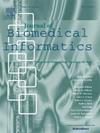一种关键子图连通性驱动的图神经网络可解释性策略。
IF 4
2区 医学
Q2 COMPUTER SCIENCE, INTERDISCIPLINARY APPLICATIONS
引用次数: 0
摘要
当前的图神经网络(gnn)可解释性策略通常关注于单个节点或边缘,而忽略了关键子图在决策过程中的重要性。这种限制可能导致分散和不可靠的解释结果,特别是对于复杂的任务。本文提出了一种基于欧几里得距离的关键子图检索方法,利用在BA3和Mutagenicity数据集上训练得到的节点表示来解释GNN决策。本文提出的方法分别在99.25%和82.40%的数据集上达到准确率。与其他主流可解释性策略的性能比较实验,以及可视化分析,证明了该方法的有效性和鲁棒性。本文章由计算机程序翻译,如有差异,请以英文原文为准。

A graph neural network explainability strategy driven by key subgraph connectivity
Current explainability strategies for Graph Neural Networks (GNNs) often focus on individual nodes or edges, neglecting the significance of key subgraphs in decision-making processes. This limitation can result in dispersed and less reliable explanatory outcomes, particularly for complex tasks. This paper proposes a key subgraph retrieval method based on Euclidean distance, leveraging node representations obtained through training on the BA3 and Mutagenicity datasets to interpret GNN decisions. The proposed method achieves accuracies of 99.25% and 82.40% on the respective datasets. Performance comparison experiments with other mainstream explainability strategies, along with visualization analyses, demonstrate the effectiveness and robustness of this approach.
求助全文
通过发布文献求助,成功后即可免费获取论文全文。
去求助
来源期刊

Journal of Biomedical Informatics
医学-计算机:跨学科应用
CiteScore
8.90
自引率
6.70%
发文量
243
审稿时长
32 days
期刊介绍:
The Journal of Biomedical Informatics reflects a commitment to high-quality original research papers, reviews, and commentaries in the area of biomedical informatics methodology. Although we publish articles motivated by applications in the biomedical sciences (for example, clinical medicine, health care, population health, and translational bioinformatics), the journal emphasizes reports of new methodologies and techniques that have general applicability and that form the basis for the evolving science of biomedical informatics. Articles on medical devices; evaluations of implemented systems (including clinical trials of information technologies); or papers that provide insight into a biological process, a specific disease, or treatment options would generally be more suitable for publication in other venues. Papers on applications of signal processing and image analysis are often more suitable for biomedical engineering journals or other informatics journals, although we do publish papers that emphasize the information management and knowledge representation/modeling issues that arise in the storage and use of biological signals and images. System descriptions are welcome if they illustrate and substantiate the underlying methodology that is the principal focus of the report and an effort is made to address the generalizability and/or range of application of that methodology. Note also that, given the international nature of JBI, papers that deal with specific languages other than English, or with country-specific health systems or approaches, are acceptable for JBI only if they offer generalizable lessons that are relevant to the broad JBI readership, regardless of their country, language, culture, or health system.
 求助内容:
求助内容: 应助结果提醒方式:
应助结果提醒方式:


